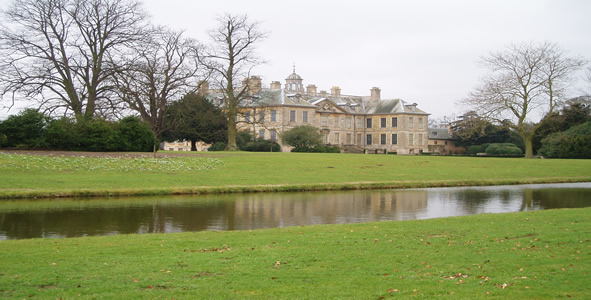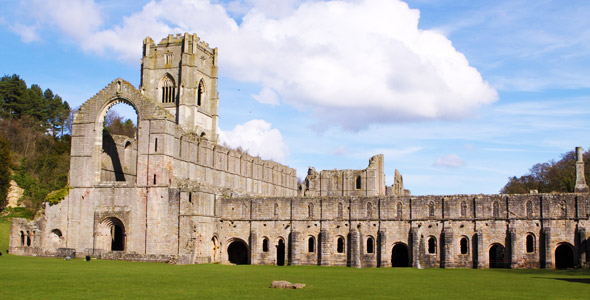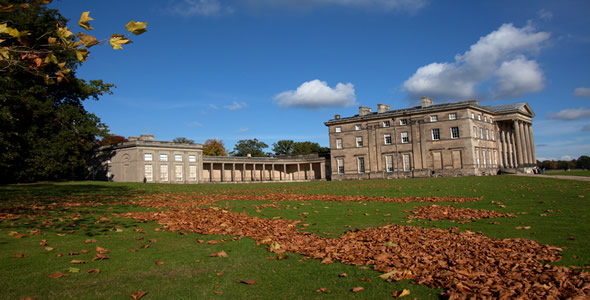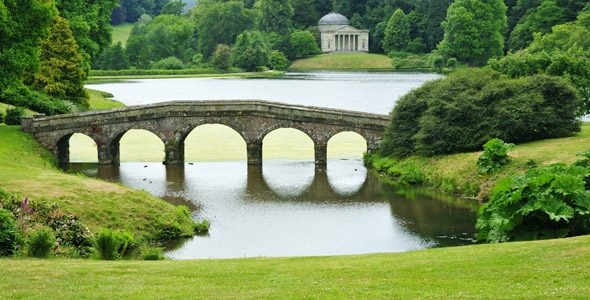
Name: Belton House
Address: Grantham, Lincolnshire, NG32 2LS
Telephone: 01476 566116
Belton House is a magnificent country house near Grantham in Lincolnshire that has been described as one of the finest examples of an English country house in existence. It consists of a mansion within formal gardens that encompass avenues that lead to follies that are contained within a larger outer wooded area.
The Brownlow and Cust families were associated with the property for some 300 years since they first bought the land in the late 16th century. The Belton House mansion was built in 1685 – 1688 via the fortunes made from sheep farming and the law by the owners of the estate. Sir John Brownlow and his wife decided to have the property built in the Carolean (thus called due to the currently reigning monarch Charles II) style as opposed to the contemporary Baroque style and there has been some controversy as to who the design can be attributed to. Some claim that Sir Christopher Wren provided the design whereas others claim William Winde.
Belton House was designed using an “H” shaped plan which meant that rooms could be placed back to back allowing for more efficient heating, lighting and above all else privacy. At the time of building it was the norm to include a number of “state” rooms as part of the design of the property in case of a stay from a high ranking official or royalty. Peculiarly Belton House did not have these types of rooms includes in the design. Perhaps this could be attributed towards the fact that although the Brownlow’s had great wealth they were only held a baronetcy – they were gentry as opposed to aristocracy. Therefore, they did not necessary expect a royal visit, although this did not stop the visit of King William III to the newly completed house in 1695 where he stayed in the “Best bedchamber” room which is directly above the saloon that led from the second floor Great Dining Chamber.
The interior of Belton House contains many exquisite decorations and furnishings ranging from the remnants of a collection of Old Masters, panelling that may have been carved by Grinling Gibbons and the vast garden scenes canvasses by Melchior d’Hondecoeter.
The 1,317 acres that is part of the estate houses features such as the “Italian garden”, Orangery and Church along with ponds, canal ponds and more formal gardens. Between 1742 and 1751 a Gothic ruin, a cascade, and a belvedere known as the Belmount Tower were constructed for the then owner Viscount Tyrconnel.
By 1984 the financial burden of maintaining the estate were too great for the seventh Baron at Belton House and as such the house, garden and most of the contents were transferred to the National Trust for £8 million and thanks to the National Trust the house and grounds remain open today for people to visit.
What’s There?
- One of the most elegant and famous examples of an English country house.
- Magnificent parkland and a huge range of wildlife.
- Beautiful scenic walks in the gardens.
- Lincolnshire’s largest children’s adventure playground on site.
- Miniature train rides in the summer.
- Gift shop.
- Plant shop.
- Restaurant.
- Free parking.
- Baby change facilities
- Children’s quiz and trail.
Trivia
It is understood that Belton House was the inspiration for the design of the British sign for directions to stately homes that can often be seen on motorways or major roads.
Belton House is featured as “Rosings Park” in the 1995 TV series Pride and Prejudice.
Prices
Standard adult admission is £11 to see the house and grounds. Each child costs £6.75 and a family ticket is £29.
Free admission for National Trust members.
See more information on National Trust Membership.



